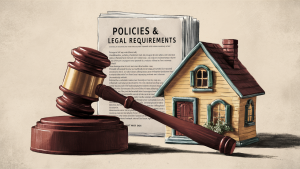
Airbnb Guest: A Host’s Guide to a Memorable Start
Facebook Twitter LinkedIn Reddit Email WhatsApp Welcome Your First Guest on Airbnb: A Host’s Guide to a Memorable Start Welcoming your first guest on Airbnb
When you apply for a mortgage or any other type of loan, one of the critical factors lenders evaluate is the Loan-to-Value (LTV) ratio. Understanding this ratio is essential, as it directly impacts the terms of your loan and your overall financial strategy.
Is a financial metric that compares the amount of the loan you are seeking to the appraised value of the property. In simpler terms, it measures how much of the property’s value is being financed by the loan.
Lenders use the Loan-to-value to assess the risk associated with a loan. A lower Loan-to-Value indicates that the borrower has more equity in the property, which reduces the lender’s risk. On the other hand, a higher suggests that the borrower is financing most of the property’s value, which can be riskier for the lender.
Lenders often set maximum LTV limits to minimize their risk exposure. For instance, conventional loans typically have a maximum of 80%, meaning borrowers must put down at least 20% of the property’s value as a down payment

This can significantly influence the terms of your loan, including:
Interest Rates: A lower LTV may qualify you for better interest rates, as it signifies less risk for the lender. Conversely, a higher LTV ratio could mean higher interest rates.
Private Mortgage Insurance (PMI): If your LTV ratio exceeds 80%, lenders might require you to pay PMI. This insurance protects the lender if you default on the loan and typically adds to your monthly mortgage payments.
Loan Approval: Lenders use the loan-to-Value to determine if you qualify for a loan in the first place. A high one might make it challenging to get approved, especially for conventional loans.
If you want to improve your Loan-to-value and secure better loan terms, consider the following strategies:

Is not only important when applying for a mortgage but also when refinancing. When you refinance, lenders will re-calculate your loan-to-value based on the new loan amount and the current appraised value of your property. If your property has appreciated in value since you purchased it, your LTV ratio may have improved, allowing you to refinance at a better rate or eliminate PMI.
“Real estate is an imperishable asset, ever increasing in value. It is the most solid security that human ingenuity has devised. It is the basis of all security and about the only indestructible security.”
Russell Sage Tweet
The Loan-to-Value (LTV) ratio is a crucial metric that influences loan approvals, interest rates, and other loan terms. Understanding your LTV ratio and how to manage it effectively can help you secure favorable loan conditions and save money over the life of your mortgage. Whether you’re a first-time homebuyer or a seasoned real estate investor, keeping your LTV ratio in check is essential for financial success.

Facebook Twitter LinkedIn Reddit Email WhatsApp Welcome Your First Guest on Airbnb: A Host’s Guide to a Memorable Start Welcoming your first guest on Airbnb

Facebook Twitter LinkedIn Reddit Email WhatsApp Mastering Airbnb Policies and Legal Requirements: A Guide for Hosts If you’re considering hosting on Airbnb, understanding the platform’s

Facebook Twitter LinkedIn Reddit Email WhatsApp The Anatomy of a Perfect Airbnb Listing Creating an irresistible Airbnb listing is both an art and a science.